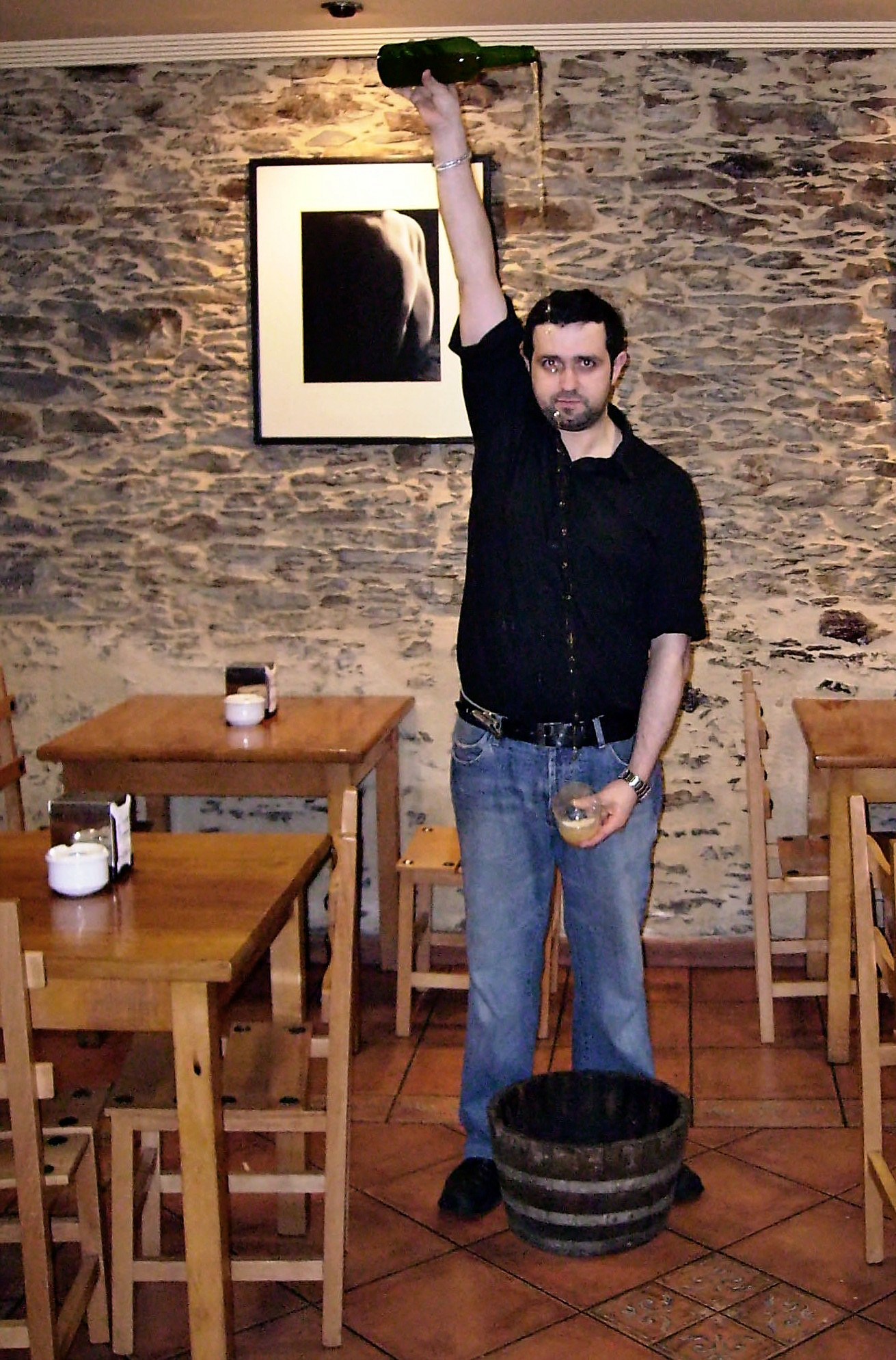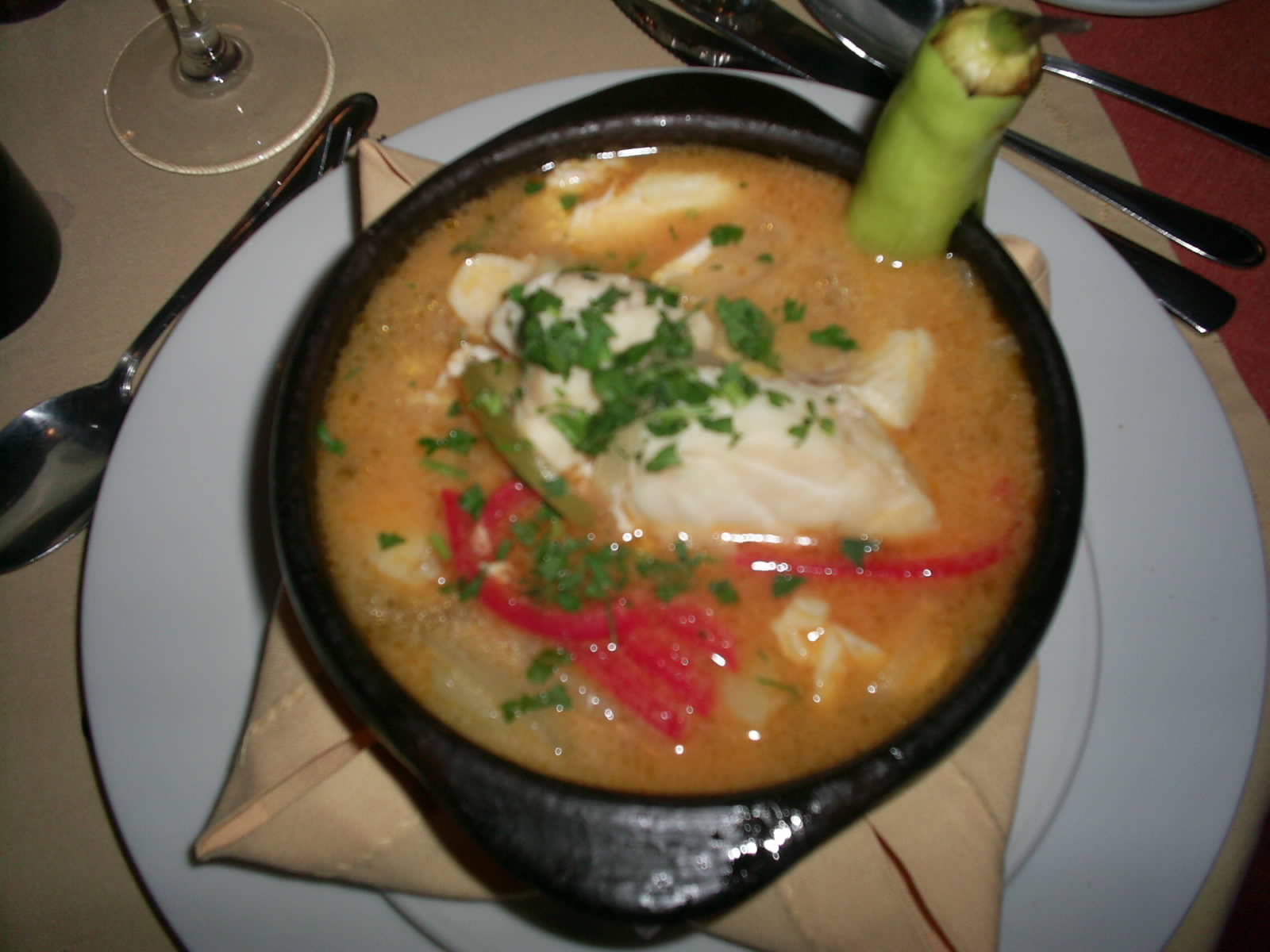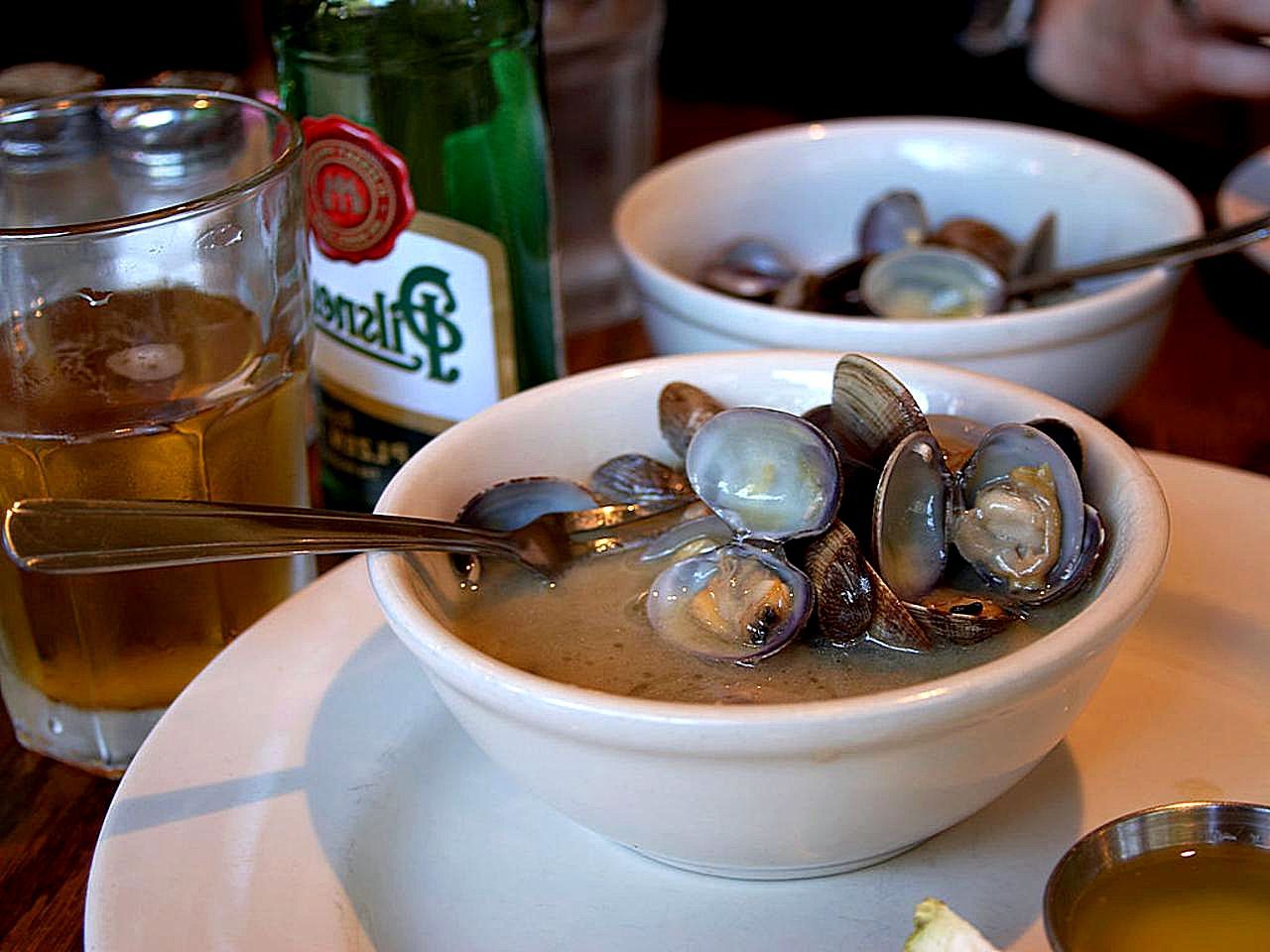|
Fabes Con Almejas
Fabes con almejas (English: Beans with claims, Spanish: ''Habas con almejas'', Asturian: ''Fabes con amasueles'') is a clam and bean stew that originated in the principality of Asturias in the 19th century as peasant fare. It is a lighter variation of Asturian ''fabada'' whose primary ingredients are sausage, beans and pork. The traditional recipe for ''fabes con almejas'' calls for small clams, fava beans, onions, garlic, salt, saffron, bay leaves, olive oil, parsley, bread crumbs and sometimes sweet paprika. See also * List of clam dishes * List of fish and seafood soups * List of seafood dishes This is a list of notable seafood dishes. Seafood dishes are food dishes which use seafood (fish, shellfish or seaweed) as primary ingredients, and are ready to be served or eaten with any needed preparation or cooking completed. Many fish or ... * References External links Fabes con Almejas recipeTake a taste of Asturias Asturian cuisine Spanish soups and ste ... [...More Info...] [...Related Items...] OR: [Wikipedia] [Google] [Baidu] |
Spanish Language
Spanish ( or , Castilian) is a Romance language of the Indo-European language family that evolved from colloquial Latin spoken on the Iberian peninsula. Today, it is a global language with more than 500 million native speakers, mainly in the Americas and Spain. Spanish is the official language of 20 countries. It is the world's second-most spoken native language after Mandarin Chinese; the world's fourth-most spoken language overall after English, Mandarin Chinese, and Hindustani (Hindi-Urdu); and the world's most widely spoken Romance language. The largest population of native speakers is in Mexico. Spanish is part of the Ibero-Romance group of languages, which evolved from several dialects of Vulgar Latin in Iberia after the collapse of the Western Roman Empire in the 5th century. The oldest Latin texts with traces of Spanish come from mid-northern Iberia in the 9th century, and the first systematic written use of the language happened in Toledo, a prominent c ... [...More Info...] [...Related Items...] OR: [Wikipedia] [Google] [Baidu] |
Onion
An onion (''Allium cepa'' L., from Latin ''cepa'' meaning "onion"), also known as the bulb onion or common onion, is a vegetable that is the most widely cultivated species of the genus ''Allium''. The shallot is a botanical variety of the onion which was classified as a separate species until 2010. Its close relatives include garlic, scallion, leek, and chive. This genus also contains several other species variously referred to as onions and cultivated for food, such as the Japanese bunching onion (''Allium fistulosum''), the tree onion (''A.'' × ''proliferum''), and the Canada onion (''Allium canadense''). The name '' wild onion'' is applied to a number of ''Allium'' species, but ''A. cepa'' is exclusively known from cultivation. Its ancestral wild original form is not known, although escapes from cultivation have become established in some regions. The onion is most frequently a biennial or a perennial plant, but is usually treated as an annual and harvested in ... [...More Info...] [...Related Items...] OR: [Wikipedia] [Google] [Baidu] |
Spanish Soups And Stews
Spanish might refer to: * Items from or related to Spain: **Spaniards are a nation and ethnic group indigenous to Spain **Spanish language, spoken in Spain and many Latin American countries **Spanish cuisine Other places * Spanish, Ontario, Canada * Spanish River (other), the name of several rivers * Spanish Town, Jamaica Other uses * John J. Spanish (1922–2019), American politician * "Spanish" (song), a single by Craig David, 2003 See also * * * Español (other) * Spain (other) * España (other) * Espanola (other) * Hispania, the Roman and Greek name for the Iberian Peninsula * Hispanic, the people, nations, and cultures that have a historical link to Spain * Hispanic (other) * Hispanism * Spain (other) * National and regional identity in Spain * Culture of Spain The culture of ''Spain'' is based on a variety of historical influences, primarily based on the culture of ancient Rome, Spain being a prominen ... [...More Info...] [...Related Items...] OR: [Wikipedia] [Google] [Baidu] |
Asturian Cuisine
Asturian cuisine refers to the typical dishes and ingredients found in the cuisine of the Asturias region of Spain. Foods Asturias is especially known for its seafood, such as fresh squid, crab, shrimp and sea bass. Salmon are caught in Asturian rivers, notably the Sella; the first fish of the season is called ''campanu'' (Bable word for ''campana''), a bell tolled to signal the first catch. Bread Spelt bread (pan d'escanda) is very traditional. Formigos are some kind of French toasts made with crumbled bread and eggs. Bollos preñaos are buns filled with ''chorizo''. Some kind of pancakes called frixuelos, similar to Galician filloas, are typical as dessert. We also find specialties made with cornmeal, such as boroña (round loaf of hard bread), the ''fariñes'', farrapes or ''papes'' (cornmeal porridge), the ''rapa'' (similar to boroña with pieces of bacon inside the dough) and tortos (cornmeal flatbread). Fruits, vegetables and legumes The most common legume in ... [...More Info...] [...Related Items...] OR: [Wikipedia] [Google] [Baidu] |
List Of Seafood Dishes
This is a list of notable seafood dishes. Seafood dishes are food dishes which use seafood (fish, shellfish or seaweed) as primary ingredients, and are ready to be served or eaten with any needed preparation or cooking completed. Many fish or seafood dishes have a specific name (" cioppino"), while others are simply described (" fried fish") or named for particular places (" Cullen skink")."The American Food Revolutions: Cuisines in America" Eldrbarry.net. Accessed June 2011. Bisques are prepared with a variety of seafoods. Seafood dishes [...More Info...] [...Related Items...] OR: [Wikipedia] [Google] [Baidu] |
List Of Fish And Seafood Soups
This is a list of soups made with fish or seafood. Seafood soups * Bisque, usually lobster bisque * Bouillabaisse — a Provencal dish, especially in the port of Marseilles * Buridda * Caldillo de congrio * Caldillo de perro * Cantonese seafood soup * Chowder ** Bermuda fish chowder ** Clam chowder ** Fish chowder ** Spiced haddock chowder * Chupe * Cioppino * Clam soup * Cullen skink * Dashi * Fish soup * Fish soup bee hoon * Fish tea * Halászlé - Hungarian spicy fish soup * Gumbo – often includes seafood, made with shrimp or crab stock * Ikan kuah kuning — a Maluku and Papua dish * Herring soup * Jaecheopguk * Lohikeitto * Lung fung soup * Maeutang * Mohinga * Moqueca * Paila marina * Phở – some versions use seafood * Pindang * Psarosoupa * She-crab soup * Sliced fish soup * Sopa marinera — a Spanish seafood dish made with oysters, clams, seashells, crab, lobster, shrimp and spices like achiote and cumin * Sopa de peixe ... [...More Info...] [...Related Items...] OR: [Wikipedia] [Google] [Baidu] |
List Of Clam Dishes
This is a list of clam dishes and foods, which are prepared using clams as a primary ingredient. Edible clams can be eaten raw or cooked. Preparations methods include steamed, boiled, baked or fried. Clam dishes * Clams casino – a clam "on the halfshell" dish with breadcrumbs and bacon.Ruth Reichl, John Willoughby, Zanne Early Stewart The Gourmet Cookbook: More Than 1000 Recipes Houghton Mifflin Harcourt, 2006 , 9780618806928 1056 pages page 5The Gourmet Cookbook/ref> It originated in Rhode Island in the United States and is often served as an appetizer in New England and is served in variations nationally. * Clam cake – also known as clam fritters * Clam dip – a dipping sauce and condiment * Clam liquor – a liquid extracted during cooking and opening of clams. Undiluted it is called clam broth. * ** White clam pie – a pizza variety * Clam soup – a soup prepared using clams as a main ingredient ** Clam chowder – a well-known chowder soup ** Jaecheop-guk � ... [...More Info...] [...Related Items...] OR: [Wikipedia] [Google] [Baidu] |
Paprika
Paprika ( US , ; UK , ) is a spice made from dried and ground red peppers. It is traditionally made from '' Capsicum annuum'' varietals in the Longum group, which also includes chili peppers, but the peppers used for paprika tend to be milder and have thinner flesh. In some languages, but not English, the word ''paprika'' also refers to the plant and the fruit from which the spice is made, as well as to peppers in the Grossum group (e.g. bell peppers). All capsicum varieties are descended from wild ancestors in North America, in particular Central Mexico, where they have been cultivated for centuries. The peppers were subsequently introduced to the Old World, when peppers were brought to Spain in the 16th century. The seasoning is used to add color and flavor to many types of dishes in diverse cuisines. The trade in paprika expanded from the Iberian Peninsula to Africa and Asia and ultimately reached Central Europe through the Balkans, which was then under Ottoman rule. T ... [...More Info...] [...Related Items...] OR: [Wikipedia] [Google] [Baidu] |
Parsley
Parsley, or garden parsley (''Petroselinum crispum'') is a species of flowering plant in the family Apiaceae that is native to the central and eastern Mediterranean region (Sardinia, Lebanon, Israel, Cyprus, Turkey, southern Italy, Greece, Portugal, Spain, Malta, Morocco, Algeria, and Tunisia), but has been naturalized elsewhere in Europe, and is widely cultivated as a herb, and a vegetable. Parsley is widely used in European, Middle Eastern, and American cuisine. Curly leaf parsley is often used as a garnish. In central Europe, eastern Europe, and southern Europe, as well as in western Asia, many dishes are served with fresh green chopped parsley sprinkled on top. Flat leaf parsley is similar, but it is easier to cultivate, some say it has a stronger flavor. Root parsley is very common in central, eastern, and southern European cuisines, where it is used as a snack or a vegetable in many soups, stews, and casseroles. It is believed to have been originally grown in S ... [...More Info...] [...Related Items...] OR: [Wikipedia] [Google] [Baidu] |
Olive Oil
Olive oil is a liquid fat obtained from olives (the fruit of ''Olea europaea''; family Oleaceae), a traditional tree crop of the Mediterranean Basin, produced by pressing whole olives and extracting the oil. It is commonly used in cooking: for frying foods or as a salad dressing. It can be found in some cosmetics, pharmaceuticals, soaps, and fuels for traditional oil lamps. It also has additional uses in some religions. The olive is one of three core food plants in Mediterranean cuisine; the other two are wheat and grapes. Olive trees have been grown around the Mediterranean since the 8th millennium BC. In 2019–2020, world production of olive oil was . Spain was the largest producer followed by Italy, Tunisia, Greece, Turkey and Morocco. San Marino has by far the largest per capita consumption of olive oil worldwide. The composition of olive oil varies with the cultivar, altitude, time of harvest, and extraction process. It consists mainly of oleic acid (up to 83%), ... [...More Info...] [...Related Items...] OR: [Wikipedia] [Google] [Baidu] |
Bay Leaf
The bay leaf is an aromatic leaf commonly used in cooking. It can be used whole, either dried or fresh, in which case it is removed from the dish before consumption, or less commonly used in ground form. It may come from several species of tree, the bay laurel and the California bay tree being the most common. The flavor that a bay leaf imparts to a dish has not been universally agreed upon, but most agree it is a subtle addition. Sources Bay leaves come from several plants, such as: * Bay laurel (''Laurus nobilis'', Lauraceae). Fresh or dried bay leaves are used in cooking for their distinctive flavour and fragrance. The leaves should be removed from the cooked food before eating (see safety section below). The leaves are often used to flavour soups, stews, braises and pâtés in many countries. The fresh leaves are very mild and do not develop their full flavour until several weeks after picking and drying. *California bay leaf. The leaf of the California bay tree ('' Um ... [...More Info...] [...Related Items...] OR: [Wikipedia] [Google] [Baidu] |
Saffron
Saffron () is a spice derived from the flower of ''Crocus sativus'', commonly known as the "saffron crocus". The vivid crimson stigma and styles, called threads, are collected and dried for use mainly as a seasoning and colouring agent in food. Although some doubts remain on its origin, it is believed that saffron originated in Iran. However, Greece and Mesopotamia have also been suggested as the possible region of origin of this plant. Saffron crocus slowly propagated throughout much of Eurasia and was later brought to parts of North Africa, North America, and Oceania. Saffron's taste and iodoform-like or hay-like fragrance result from the phytochemicals picrocrocin and safranal. It also contains a carotenoid pigment, crocin, which imparts a rich golden-yellow hue to dishes and textiles. Its recorded history is attested in a 7th-century BC Assyrian botanical treatise, and has been traded and used for thousands of years. In the 21st century, Iran produces some 90% of ... [...More Info...] [...Related Items...] OR: [Wikipedia] [Google] [Baidu] |










